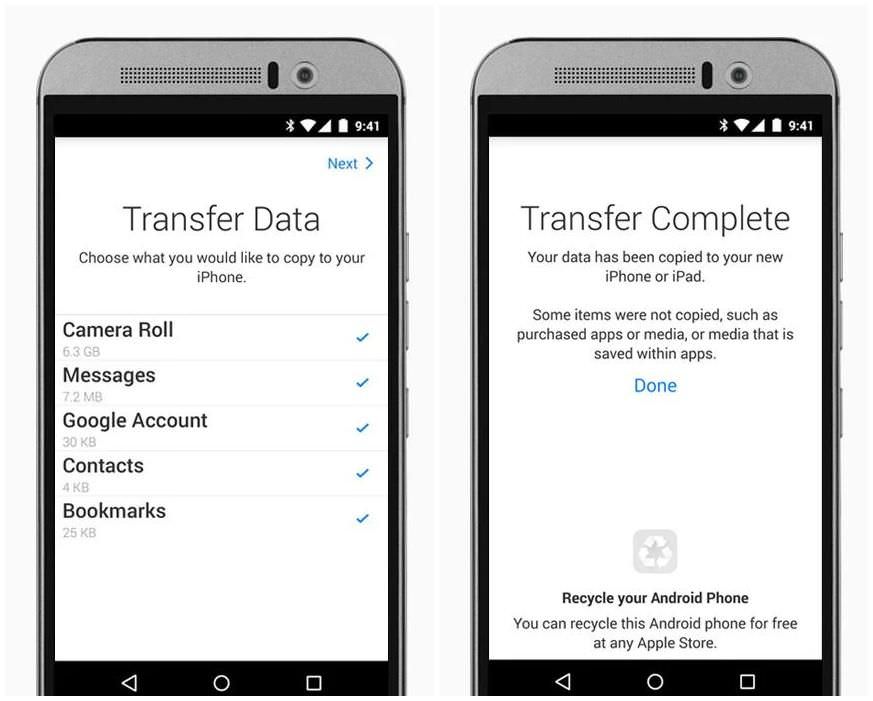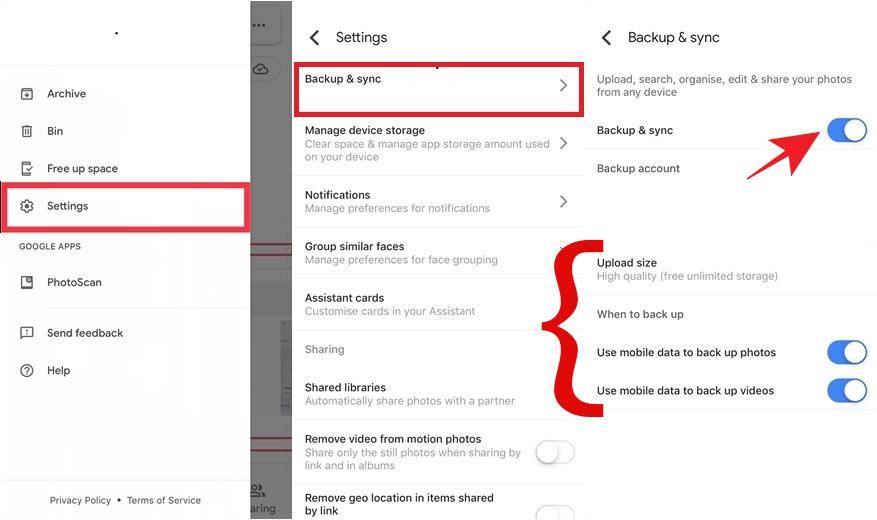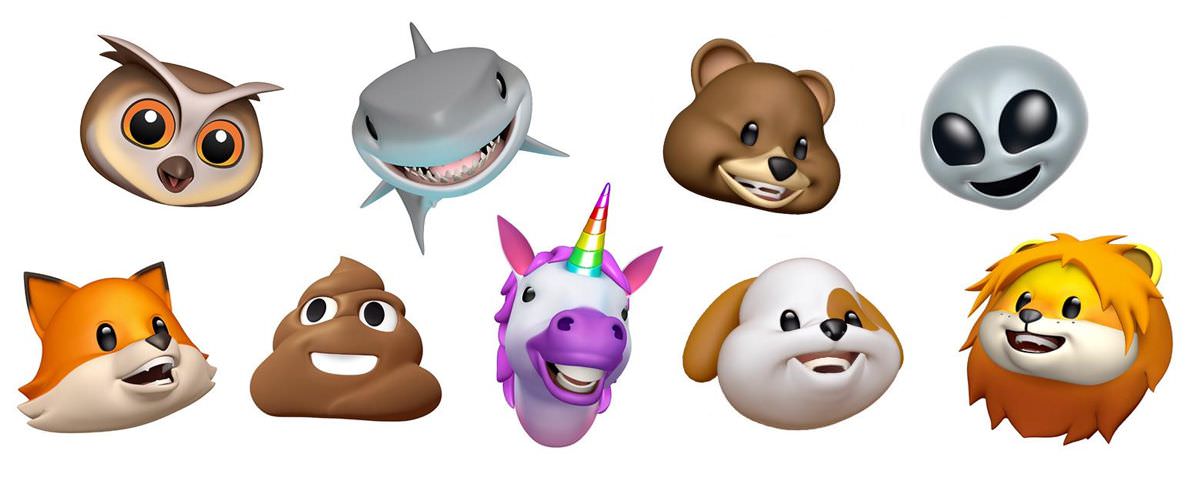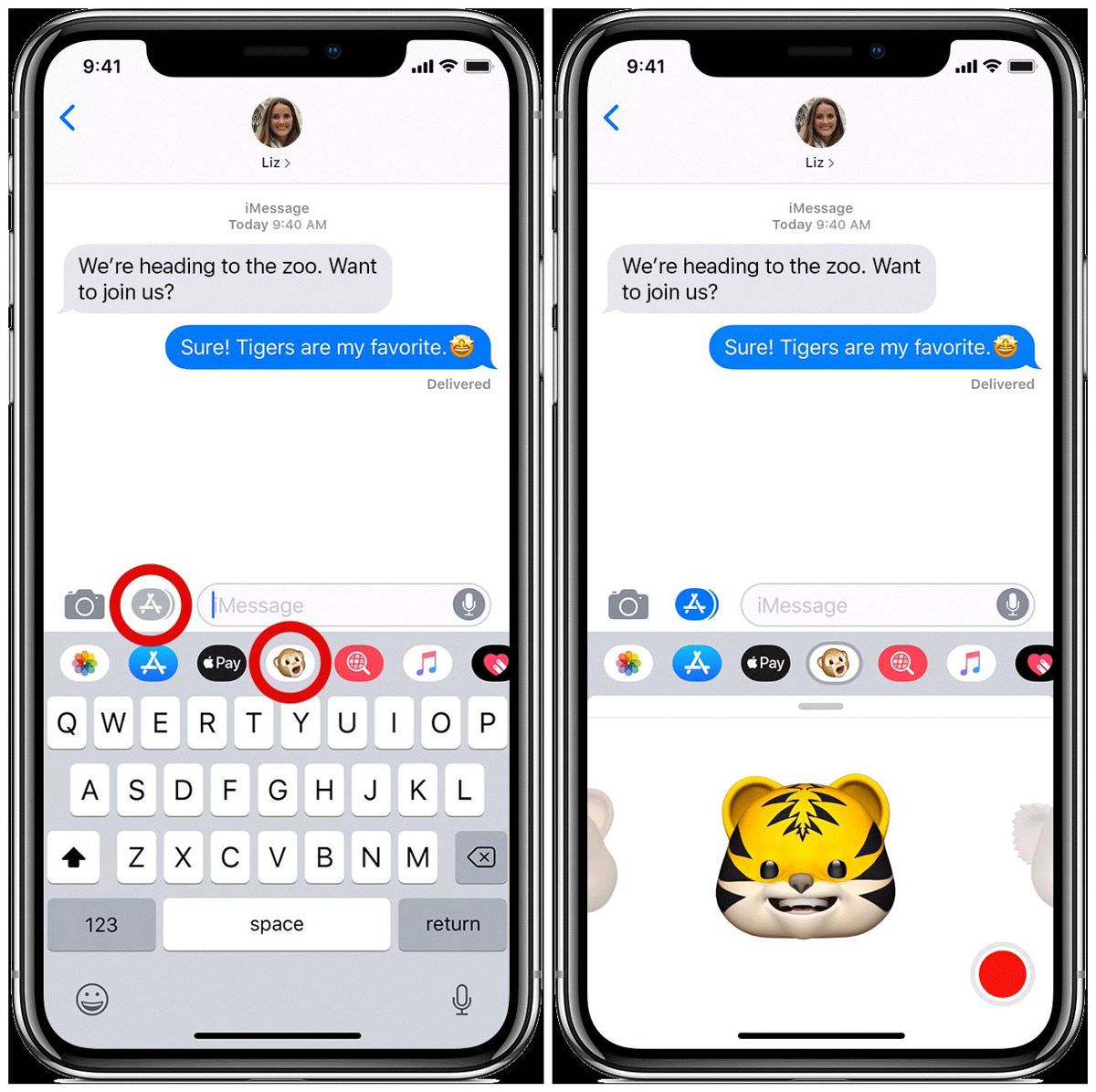Migrating From Android to iOS: 10 Burning Questions For New Users
Are you an Android user who has recently purchased an iOS device and are having difficulties in setting it up? Due to the difference in their features and functionalities, it can be pretty frustrating for people who are used to the Android OS to get accustomed to iOS.
No worries though, as this post will tell you all about switching from an Android device to an iOS device and setting up your iPad or iPhone as easily and quickly as possible.
1. How to take screenshots on iOS device?
The screenshot feature is quite handy to grab or share the screen’s content quickly. It’s easy to take a screenshot in iOS as it is in Android.
For iPhone X or later:
- Press Side + Volume up buttons simultaneously.
For older iPhone models:
- Press Top or Side button + Home button simultaneously.
Force Start / Reboot Any iPhone
Guide to force restart or reboot any type of iPhone models. Read more
2. How to set up Face ID on iOS device?
Did you use the face ID to open the lock screen on Android and want to try out the same on iPhone or iPad? Then take the following steps to configure Face ID on your new iOS device:
- Open Settings and go to “Face ID & Passcode”.
- Tap “Set Up Face ID” and type your passcode if required.
- Hold your iOS device in portrait orientation, position your face directly in front of it and then tap “Get Started”.
- Now position your face so as to place it inside the given frame and slowly move your head for the system to fully scan your face.
- Tap Continue after you finish the first scan and proceed to the second.
- Once you’re done with both scans, click Done and the face ID will be configured on your iOS device.

3. How to use two numbers on iOS device?
In 2018, Apple finally released dual-SIM iPhones, but there is a catch — as is customary with Apple. You can use two numbers in an iPhone using its new feature named “eSIM”.
An eSIM is a digital SIM that allows you to activate a cellular plan from your carrier without having to use a physical SIM (unlike most of the present smartphones that let you use two physical nano-SIMs).
Using an eSIM along with a nano-SIM in an iPhone, you can use two numbers to make and receive voice calls, but you can utilize just one data network at a time.
Moreover, you need to keep a few things in mind to use the eSIM feature:
- The eSIM facility is only available on the latest iPhones i.e. iPhone XS, iPhone XS Max, and iPhone XR running on iOS 12.1 or later.
- You need a QR code or a carrier app from a supporting wireless carrier. For example, AT&T, T-Mobile, and Verizon provide this service in the US. If you live in a different country, visit this page to find the operators.
Follow the steps below to activate your eSIM:
- Open Settings > Cellular.
- Click Add Cellular Plan.
- Scan the QR code provided by your carrier.
In case you don’t have a QR code, you can set up the eSIM manually by tapping Enter Details Manually at the bottom of the screen in your iPhone.

Note: One can store multiple eSIMs, but only one eSIM can be activated and kept in service at a time. You can switch eSIMs by heading over to Settings > Cellular > Cellular Plans, choosing the eSIM, then tapping Turn On This Line.
4. How to transfer data from Android to iOS?
Apple has made easy for the users to transfer data from Android to iPhone, thanks to its app on Google Play Store named Move to iOS. You can use this app to transfer bookmarks, contacts, messages, and camera roll to the new device.
But you must ensure the following requirements before continuing further:
- On your Android device, make sure the Wi-Fi is turned on.
- Install Move to iOS on your Android device.
- Plug your new iOS device as well as your Android device into power.
- Check the content you’re transferring — including what’s on your memory card — will fit on your new iOS device (check for free storage space).
When you’re ready, follow these steps to transfer the data using Move to iOS:
- While setting up your new iPhone, you’ll get a screen titled Apps & Data. Here, select Move Data from Android from its options.
- Open Move to iOS in your Android phone, then click Agree and tap Next in the top-right corner of the Find Your Code screen.
- Now, click Continue on the Move from Android screen on your iPhone and .
- A six or ten-digit code will appear on your iOS device that you’ll need to enter in your Android phone.
- Now on your Android phone, choose the content that you want to transfer to the iOS device and tap Next.
- Once the transfer is complete, tap Continue on your iPad or iPhone to finish the initial setup.

5. How to transfer Calendar data to iOS?
The above trick allows you to transfer bookmarks, contacts, and camera roll, but it doesn’t work for migrating calendar data. So, what’s the solution?
It’s very easy to move your calendar data from Android to iOS, thanks to Google. You just need to connect your Google account in iOS. That being said, here are the detailed steps to move your calendar data to iOS:
- Open Settings and go to Accounts & Passwords > Add Account > Google.
- Enter your Google credentials and login to your account.
- Now, switch on the Calendars option on the screen.
- Lastly, click on Save and your calendar data will get synced.

6. How to migrate photos and videos to iOS?
To migrate photos and videos to iOS, you can use Google Photos. It allows backing up unlimited high-def photos to the cloud, or you can upload full-size photos per space in your Google Drive.
You can also use Move to iOS to transfer your photos and videos to your new iPad or iPhone, however, I read complains that it doesn’t work well all the time.
That said, here is how you can back up your media with Google Photos:
- First of all, you need to make a backup of all the photos and videos on your old phone via Google Photos. You can backup all your photos to the cloud, and these photos will get stored in your Google account.
- Download Google Photos from the App Store on your iPhone, and log in to the same Google Account you were using on your Android phone.
- Finally, sync the backed up photos and videos to your Apple device.

7. How to migrate Contacts via Bluetooth?
If you wish to migrate just the contacts via Bluetooth, there is a sneaky method to do so. It’s built right into Android and iOS, so you don’t need additional apps.
Just follow these steps:
- Open Contacts in Android and click the three-dot button.
- Click Select all or select particular contacts > click the Share icon.
- Select the Bluetooth option and click TURN ON if it’s prompted.
- Now, choose the iOS device you wish to share the contacts with.
- After they’re transferred, open the file(s) and iOS will import them.

8. How to make use of gestures in iOS?
In both Android and iOS, gestures have been a big feature overhaul in the last few years — for a good reason. The gestures bring a smoother experience on the touch devices by helping you to do different tasks via gestures and taps.
However, gestures work differently in iOS than Android, as expected. That said, let me introduce you to some of the handiest gestures for iOS:
- Swipe down from the top: Check your notifications.
- Swipe down from the middle: Search for apps and more.
- Swipe up from the bottom: Go directly to the Home screen.
- Swipe up from the bottom and hold: Switch between apps.
- Swipe right from the Home or Lock screen: Check the widgets.
- Swipe down from the top-right corner: Open the Control Center.
9. How to use Animoji on iPhone X or later?
Animoji is one of the original features of iPhone X, which also inspired animated emojis in Android. For example, Android apps such as Bitmoji and Emoji Maker or Samsung’s AR Emoji — Samsung’s take on Apple’s Animoji.
You must have used one of those apps or features, but iOS’s Animoji is a little different. First of all, it’s built right into the system, unlike the apps for Android (except AR Emoji by Samsung).
Then, it matches your facial expressions way better than its alternatives. That said, it helps you create your own animated avatar — named Animoji — that matches your voice and reflects your facial expressions as well.

Did you got an idea? Let’s see how you can create your own Animoji in iOS:
- Open Messages, and open a message or start writing a new one.
- Tap the app icon on the left of the message field and the tap the Animoji icon.
- Select an Animoji, adjust and place your face inside the shown frame and make facial expressions.
- Finally, touch and hold your Animoji, then drag and drop it to the thread for sharing it with your contact. Optionally, tap Save to save the Animoji.

10. Can I check or monitor my phone usage in iOS?
If you used Digital Wellbeing in Android 9 Pie before moving to iOS, you may wish to track your phone usage in iOS as you could do with Digital Wellbeing.
Fortunately, you can track your phone usage in iOS too, but it’s only available starting from iOS 12. You can check your screen time by heading over to Settings > Screen Time. You can examine the visual breakdown of your time you spend gaming, socializing with others, or using the device or its installed apps.
Moreover, if you wish to curb usage of certain addictive apps, then you can do so using App Limits, which allows limiting the time for explicit apps. What’s most interesting is that one of its features — Downtime — lets you restrict access to the device and limit yourself (or maybe your kids) to some selected apps.

11. Why is “Move to iOS” not working? How to fix it?
Move to iOS may not work due to multiple reasons. That’s why you may require to try out multiple hacks before it’s fixed for you. Here are those fixes:
- Restart your device. This shall be the first troubleshooting step for fixing any device. If it doesn’t work, keep reading and do the next fix.
- Check network connections. Since Move to iOS works using WiFi, please make sure both devices have stable network connections. Also, turn off mobile data to confirm that your Android device is using WiFi.
- Turn on Airplane mode. Lastly, activate Airplane mode in your devices, then turn on WiFi while still in Airplane mode. It mostly works.
12. How long does it take to migrating from Samsung to iPhone?
It mostly depends on the amount of data you’re migrating from Samsung (or any other Android phone for that matter) to an iPhone or iPad. For example, it may take around 10-15 minutes if you’re transferring some gigabytes of data.
Final thoughts
Although the iOS ecosystem is not as large as Android’s, it has its own pros and cons. Apple believes in providing native features for fulfilling users’ demands; however, Google depends on its developer community for bringing innovative features. Nevertheless, there is a lot one can learn about iOS.